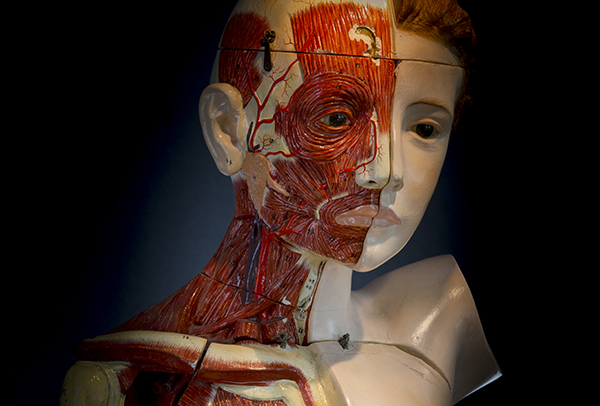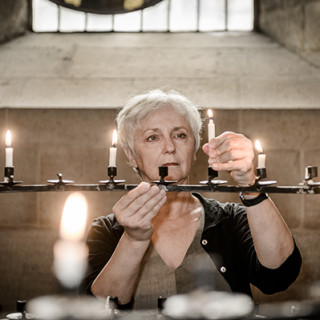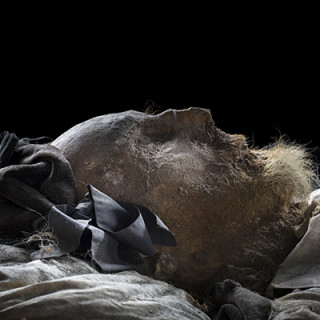Death saves lives
An organ donor can save the lives of up to eight other people. In spite of this, the current number of organ donations is not sufficient to meet existing needs. One problem is that not all possible organ donations are carried out. And one of the reasons for this is that most of us have not taken a stand for or against donation.
In the worst-case scenario – when it is not possible to save a life despite intensive care and the only thing maintaining breathing and blood circulation is a respirator – then there can be some small consolation in knowing that there is a chance of saving the lives of others.
But if the person who has died has not taken a stand on donation, the next of kin are faced with this choice in an already difficult situation. And if the staff in the intensive care ward are not secure in the situation – and perhaps not even positive to organ donation themselves – the next of kin can be influenced to refuse donation.
“What we know from research into next of kin today is that it is not the ones who agree to donation who regret their choice – but the ones who refuse”, says Anna Forsberg, registered nurse and researcher at the Department of Health Sciences, Lund University.
The warm death
One of the reasons why both next of kin and intensive care staff find it difficult to take the decision on donation by the potential donor’s deathbed, is that death does not look the way we usually imagine it. Purely intuitively we see a person as dead when their heart has stopped beating, they are no longer breathing and their body is cold, pale and still. But in the case of what Anna Forsberg calls the warm death, a person is dead when all the functions in all parts of the brain have failed irreversibly, while breathing and blood circulation are maintained artificially by a respirator. In this scenario you see and feel life; it is counter-intuitive to think that the person is dead.
“There is only one death, but you can die in different ways. What is important to understand is that in the case of so-called brain death, there are clear rules and criteria for how death is diagnosed. The diagnosis is made repeatedly by a specialist physician using particular methods”, says Anna Forsberg.
The dilemma of healthcare staff
Organ donation is a very unusual situation for staff in intensive care wards and not always easy to handle for people whose work is to save lives. In addition to the difficulty in accepting the “warm death”, research shows that staff find it difficult when they need to ask the next of kin about donation. They feel that they are causing further suffering. But this is not the case, according to the research. What has shown to be true is that the staff’s attitude greatly affects the response to the question.
“It is profoundly human to think that the issue is complicated and difficult”, says Anna Forsberg. “It is understandable that those working in intensive care are strongly driven to save lives. At the same time, they have to be able to handle the fact that some patients die in a way that makes it possible to save other lives. If those of us who work in healthcare cannot manage the situation, it becomes a problem.”
Anna Forsberg therefore works a lot on training staff in intensive care. Last year, together with Petra Lilja Andersson, she also wrote a book, “Living on – when organ donation makes it possible”, which healthcare staff can use as a basis for discussion.
“As healthcare staff, we must work on ourselves so that we know where we stand. If we are secure in ourselves, it makes it easier for the next of kin to take a decision which feels right for them”.
“But above all, it is important to take a stand when you are alive”, concludes Anna. “In Sweden, we are almost best in the world at being positive towards organ donation. But that isn’t enough if we are not good at making our position known”.
Text: Pia Romare
Image: Historiska museet, Lund
Facts
-
How do we get more donations in the future?
-
• Through more people taking a stand and saying yes. Out of Sweden’s 9.6 million inhabitants, only 1.5 million have currently taken a stand. People under 18 years of age can also clarify their position, but the parents’ decision is final until the person comes of age.
• By increasing knowledge among intensive care staff so that everyone is working to ensure that suitable donors actually donate.
• By finding other ways of preserving organs without keeping the deceased in intensive care. Some countries have so-called “non heart-beating donors” where the organs are taken care of after a person has died of cardiac arrest. The new review of the law and criteria for determining human death could potentially lead to acceptance of this practice also in Sweden.
-
Facts on organ donation
-
• Organ donations have taken place in Sweden since 1988, when the new concept of death was introduced. But the number of organ donors remains low in comparison to other countries. There are approximately 130–150 donations per year, whereas the need remains high.
• Out of the 90 000 people who die every year, only about 200–250 can become suitable organ donors, i.e. they die in such a way as to make organ donation possible. The current requirement is that they die in an intensive care ward (in Sweden) and are on a respirator.
• An organ donor can save the lives of up to eight other people. We can donate our heart, lungs, kidneys, pancreas, liver and the whole intestinal tract, as well as a number of different tissues. The number of transplants in 2013 was 733 in total.
• On 1 July 2014 there were 764 people on a waiting list for organ transplant in Sweden. Every year, around 50 of them die due to organ shortage.
-
Misconceptions about organ donation
-
• They will try and remove my organs before I am dead
• They are only keeping people alive in order to harvest their organs.
This is not the case. The person is dead – brain dead – and only the body is kept oxygenated using a respirator.
• It looks like a butchery when they remove the organs and the body is left completely mutilated.
This is not the case. The body is opened, the organs removed and the body sewn up. Afterwards, the person looks complete and whole and the next of kin can pay their last respects.
-
If you want to clarify your position there are three different ways of doing so:
-
1. Talk to your next of kin and tell them that if you die in circumstances enabling organ donation you want …
2. Fill in a donation card. You can get one at a pharmacy. There is also an app produced by MOD (More Organ Donation) which allows you to take a stand.
3. Register as an organ donor directly with the National Board of Health and Welfare.
Whatever you decide, you can always change your mind; your most recent instructions are those that apply.
-
The concept of death
-
The traditional concept of death (cardiac death): when the heart has stopped beating and breathing has ceased (it only takes a few minutes after that for the brain to die).
Concept of death since 1988 (brain death): when all the functions of the brain have completely and irreversibly failed.






